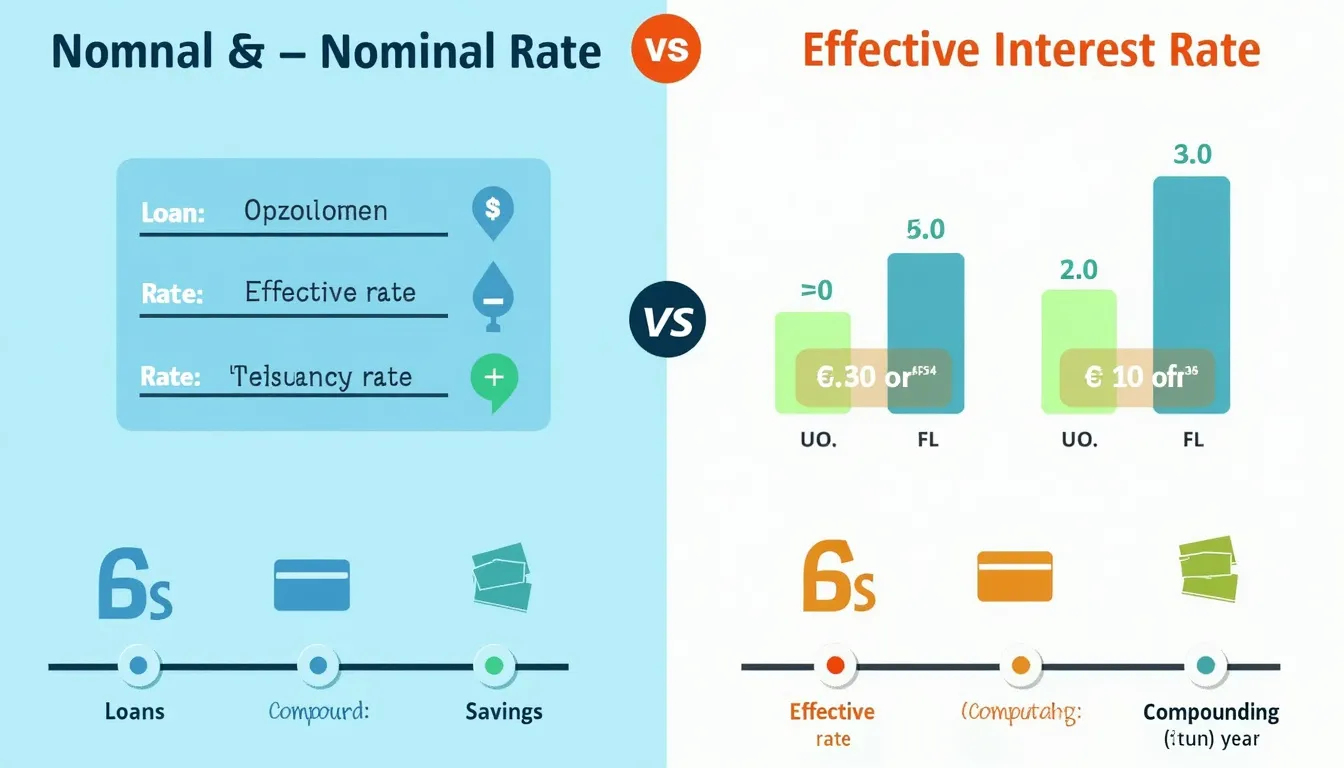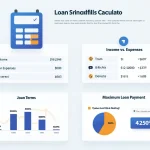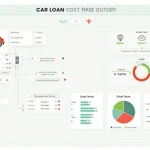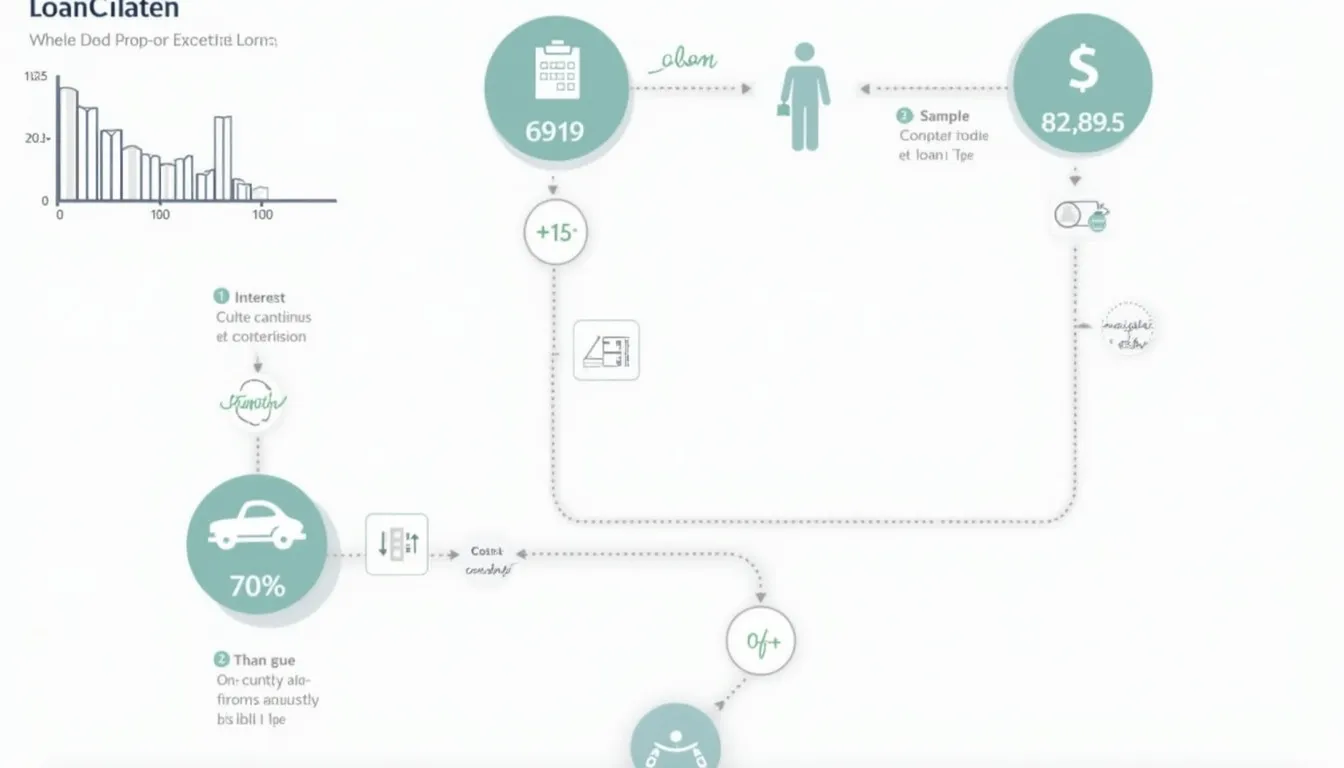Nominal and Effective Rates Calculator
How to Use the Nominal and Effective Rates Calculator Effectively
Our Nominal and Effective Rates Calculator is a powerful tool designed to help you understand the true cost of borrowing or the actual return on your investments. Here’s how to use it effectively:
- Enter the Nominal Rate: Input the stated annual interest rate as a percentage. For example, if your loan has a 5% annual rate, enter “5”.
- Select Compounding Frequency: Choose how often interest is compounded from the dropdown menu. Options include annually, semi-annually, quarterly, monthly, or daily.
- Click “Calculate”: The calculator will instantly compute the Effective Annual Rate (EAR).
- Review Results: The EAR will be displayed, showing you the true annual cost or return when accounting for compounding.
Understanding Nominal and Effective Interest Rates
To fully grasp the importance of this calculator, it’s crucial to understand the difference between nominal and effective interest rates:
- Nominal Rate: This is the stated annual interest rate, often advertised by banks and lenders. It doesn’t account for compounding.
- Effective Rate: This reflects the true annual cost or return when compounding is considered. It’s always higher than the nominal rate (except for annual compounding, where they’re equal).
The relationship between nominal and effective rates is given by the formula:
Where n is the number of compounding periods per year.
Benefits of Using the Nominal and Effective Rates Calculator
Utilizing this calculator offers numerous advantages:
- Accurate Comparison: Compare different loan offers or investment opportunities on an equal footing, regardless of their compounding frequency.
- True Cost Revelation: Understand the actual annual cost of borrowing, which can be significantly higher than the stated rate.
- Investment Return Clarity: Get a clear picture of your expected annual return on investments, accounting for compound interest.
- Financial Decision Support: Make more informed decisions about loans, savings accounts, and investments.
- Time-Saving: Quickly perform complex calculations without the need for manual computations or spreadsheets.
Addressing User Needs and Solving Specific Problems
The Nominal and Effective Rates Calculator addresses several common financial challenges:
- Loan Comparison: When faced with multiple loan offers with different rates and compounding frequencies, this calculator allows for easy comparison.
- Investment Evaluation: Compare different investment options to determine which offers the best effective return.
- Budgeting Accuracy: By revealing the true cost of borrowing, it helps in creating more accurate financial budgets.
- Financial Literacy: It educates users about the impact of compounding, promoting better financial understanding.
Practical Applications and Examples
Let’s explore some real-world scenarios where this calculator proves invaluable:
1. Comparing Loan Offers
Imagine you’re comparing two personal loan offers:
- Loan A: 6% nominal rate, compounded monthly
- Loan B: 6.1% nominal rate, compounded annually
Using our calculator:
- Loan A’s effective rate: 6.17%
- Loan B’s effective rate: 6.10%
Despite the higher nominal rate, Loan B is actually cheaper due to less frequent compounding.
2. Evaluating Savings Accounts
Consider two savings account options:
- Account X: 2% nominal rate, compounded daily
- Account Y: 2.05% nominal rate, compounded quarterly
Calculator results:
- Account X’s effective rate: 2.02%
- Account Y’s effective rate: 2.07%
Account Y offers a better return despite less frequent compounding.
3. Understanding Credit Card Interest
A credit card charges 18% APR (Annual Percentage Rate), compounded daily. Using the calculator, we find the effective annual rate is actually 19.72%. This significant difference highlights the importance of paying off credit card balances quickly.
Frequently Asked Questions (FAQ)
Q1: What’s the difference between APR and APY?
A1: APR (Annual Percentage Rate) is typically the nominal rate, while APY (Annual Percentage Yield) is the effective rate. APY accounts for compounding and is always higher than or equal to APR.
Q2: Why is the effective rate always higher than the nominal rate?
A2: The effective rate is higher due to compounding. Each time interest is calculated and added to the principal, it earns interest on itself in subsequent periods, leading to a higher overall return or cost.
Q3: How does compounding frequency affect the effective rate?
A3: More frequent compounding leads to a higher effective rate. Daily compounding results in the highest effective rate for a given nominal rate.
Q4: Can the effective rate ever be lower than the nominal rate?
A4: No, the effective rate is always equal to or higher than the nominal rate. They are equal only when compounding occurs annually.
Q5: How accurate is this calculator?
A5: This calculator uses standard financial formulas and provides results accurate to two decimal places, which is sufficient for most financial decisions.
Conclusion: Harness the Power of Interest Rate Knowledge
The Nominal and Effective Rates Calculator is an essential tool for anyone looking to make informed financial decisions. By revealing the true cost of borrowing and the actual return on investments, it empowers users to:
- Make smarter loan choices
- Select the most profitable savings and investment options
- Understand the real impact of interest on their finances
- Plan more accurately for future financial goals
In today’s complex financial landscape, understanding the difference between nominal and effective rates is crucial. This calculator bridges the gap between stated rates and real-world impact, providing clarity and confidence in your financial decision-making process.
Don’t let misleading nominal rates cloud your judgment. Use our Nominal and Effective Rates Calculator to unveil the true financial implications of your borrowing and investing decisions. Empower yourself with accurate information and take control of your financial future today!
Is this tool helpful?
Important Disclaimer
The calculations, results, and content provided by our tools are not guaranteed to be accurate, complete, or reliable. Users are responsible for verifying and interpreting the results. Our content and tools may contain errors, biases, or inconsistencies. We reserve the right to save inputs and outputs from our tools for the purposes of error debugging, bias identification, and performance improvement. External companies providing AI models used in our tools may also save and process data in accordance with their own policies. By using our tools, you consent to this data collection and processing. We reserve the right to limit the usage of our tools based on current usability factors. By using our tools, you acknowledge that you have read, understood, and agreed to this disclaimer. You accept the inherent risks and limitations associated with the use of our tools and services.







